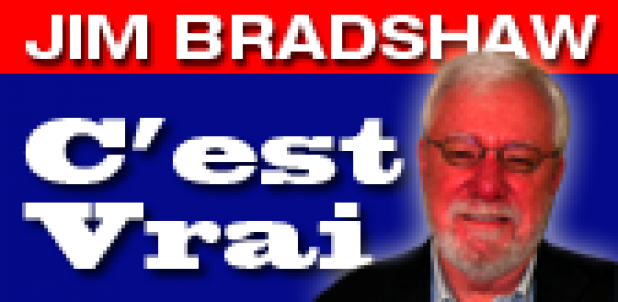
Jim Bradshaw: Louisiana man's country melody became a pop hit
The Andrews Sisters and Webb Pierce were among the diverse artists who propelled the song “Wondering” into national prominence in the early 1950s as a song to dance to and one that rose high upon the old Hillbilly Hit Parade.
We still hear it from time-to-time on “oldies” radio stations, and some of us remember the lyric, “I wonder if she’s wondering, too.”
But I wonder how many folks remember that the song was written by Rayne’s Joe Werner while he sipped coffee in Paco’s Café.
“It was back in my courtin’ days,” he said.
“One day I sat down and started picking away at the guitar and playing the harmonica and the tune fell together. I worked out the words the same way. It was in Paco’s Cafe over in Rayne. I had the song and words before I left Paco’s that night.”
Joe, whose day job was rural circulation director for the Crowley Daily Signal, wrote the song nearly 20 years before it became a national hit, and its roots go beyond even that.
He was just a kid when Santa brought him a harmonica for Christmas and he began “fooling with music,” he said in a 1952 newspaper interview.
He liked doing that, and got pretty good at it.
He’d developed “a unique way of whistling,” and added a guitar to his repertoire, by the time he became a regular on “The Saturday Night Barn Dance” on Crowley’s KSIG radio station.
He got his first musical paycheck in the 1930s, when he won $80 in a talent contest sponsored by Heymann’s department store in Lafayette,
“Wondering” was one of the songs he played then, but only local audiences were listening.
It was just by chance that it eventually caught the nation’s ear.
Joe was playing with the Hackberry Ramblers in 1937, when they were invited to New Orleans by RCA-Bluebird records to play, among other songs, the first recorded version of the Cajun national anthem, “Jolie Blonde” under that title.
(It had previously been recorded as “Ma Blonde Est Parti.”)
Joe struck up “Wondering” during that session and, he said, “it struck up a sharp note with the boys of RCA.”
They recorded it, and it began to get regular play across the United States, as well as in Canada and Europe.
But it didn’t really take off until 1952, when Webb Pierce recorded it and it went up to the top on the Hillbilly Hit Parade.
That caught the attention of some other big names, including Bing Crosby.
The Andrews Sisters’ recording for Decca was much different than Pierce’s country version, and helped it cross over into popular music venues, bringing a wider audience still.
“I always thought it was a good song,” Joe said in that 1952 interview, and that he was enjoying the royalty he was getting from records and sheet music.
But he was a sensible man, and said he wasn’t giving up his day job.
Joe continued to write columns for the newspaper and made occasional appearances in south Louisiana until he moved to Fort Worth with his wife Anne. He died there in 1978.
You can contact Jim Bradshaw at jimbradshaw4321@gmail.com or P.O. Box 1121, Washington LA 70589.
